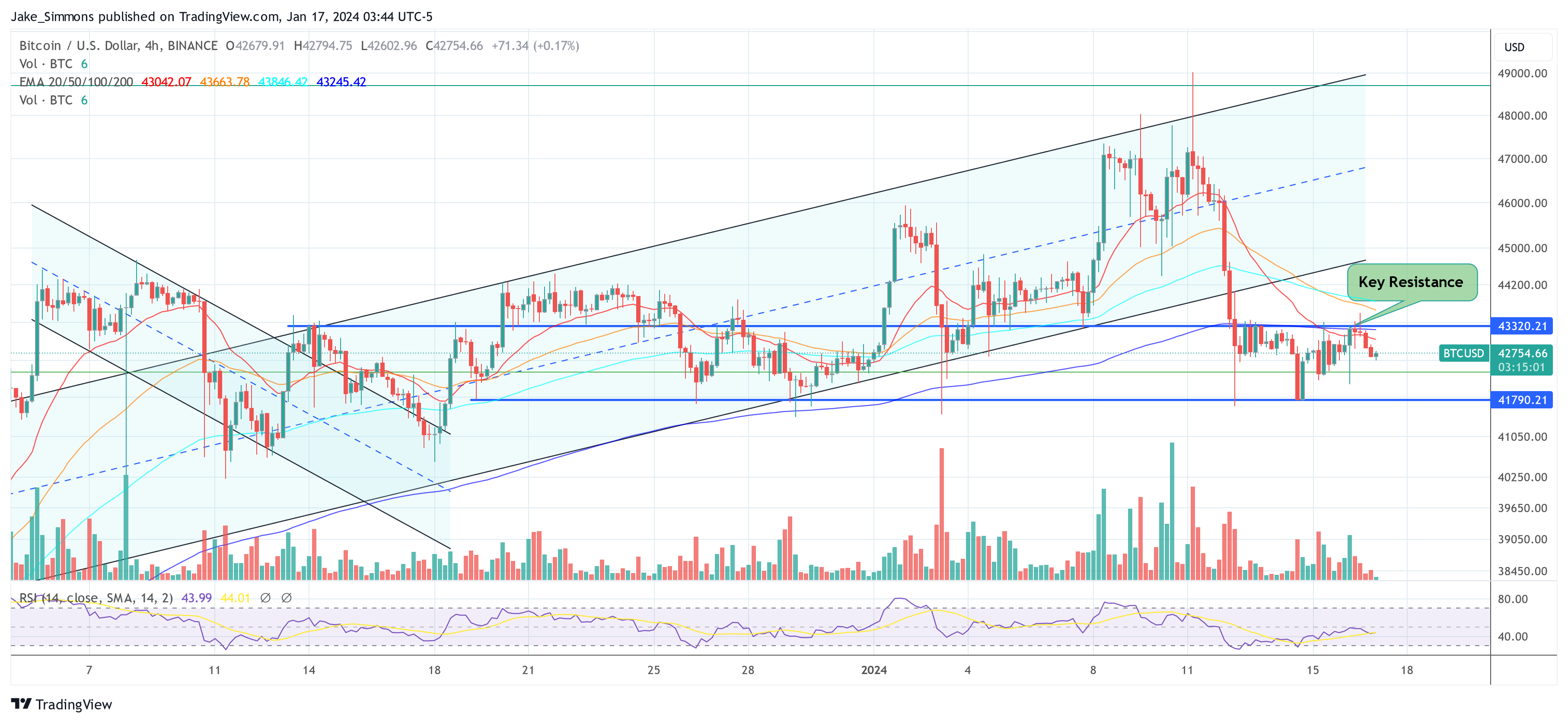The crypto trading landscape is witnessing a paradigm shift with the recent introduction of spot Bitcoin ETFs in the United States, catalyzing a new wave of trading dynamics. Bloomberg analyst James Seyffart revealed that the total trading volume of the US spot Bitcoin ETFs over the first three days approached the $10 billion mark.
This substantial volume was mainly led by Grayscale’s GBTC, with a three-day trading volume of $5.174 billion, followed by BlackRock’s IBIT of $1.997 billion, and Fidelity’s FBTC of $1.479 billion, for a total trading volume of approximately $9.771 billion.
Update on the #Bitcoin ETF Cointucky Derby. The ETFs traded a total of nearly $10 billion over three days. Will have updated flows and assets later tonight or tomorrow morning. pic.twitter.com/OnpCshjYJP
— James Seyffart (@JSeyff) January 16, 2024
Despite these impressive numbers, Bitcoin’s price performance does not reflect trading volume growth, a phenomenon that analysts attribute to a strategic pivot among Grayscale’s clientele. Investors are increasingly moving their capital from Grayscale’s GBTC, with an annual fee of 1.5%, to more cost-effective spot BTC ETFs, some of which offer fees as low as 0.25%.
However, this shift is not seamless due to the cash redemption process mandated by the Securities and Exchange Commission (SEC). As a result, investors must navigate a temporary gap, exchanging cash and then typically reallocating it to other spot BTC ETFs a few days later.
Understanding the Grayscale Effect on the Bitcoin Price
This operational feature of Grayscale’s GBTC, which does not allow same-day cash redemption of BTC and operates on a T+2 or T+1 basis, has given rise to an observable trading pattern. Alex Thorn, head of research at Galaxy, provided insight into this phenomenon, to report:
We are now seeing significant Bitcoin trading volume during US hours, especially between 3pm and 4pm NY now during the ETF fix, escalating into what has been a predictable grayscale dump of late. The game evolves.
Echoing this sentiment, Daan Crypto Trades noticed a consistent pattern in Grayscale’s activities, highlighting: “Grayscale sends X amount of Bitcoin to Coinbase every trading day ~1 hour before the market opens. Will be a good indicator to gauge how bad GBTC outflows are, I think. 4K BTC was sent on Friday. 9K BTC has been sent [Monday].”
To further substantiate these observations, CryptoQuant’s Maartunn commented on the tangible outflows of Bitcoin from the Grayscale fund, specifically to Coinbase: to report, “Data doesn’t lie, as it turns out. Shortly after the inflow of Bitcoin from Grayscale to Coinbase, the Coinbase Premium Gap, previously positive, turned negative for the first time this year, indicating strong selling pressure from Coinbase.”
He highlighted the correlation between these events and increased trading volume on Coinbase, especially during US stock market trading hours.
Crypto analyst James Van Straten continues detailed the pattern of grayscale redemptions on Coinbase Prime, noting: “We are starting to see a pattern of grayscale redemptions on Coinbase Prime right before the market opens. 9k Bitcoin ($387 million) sent to Coinbase Prime before 2:30 PM (GMT) on January 16. On January 12, 4k Bitcoin was shipped before the market opened.”
As these patterns continue to manifest and evolve, the Grayscale Effect is clearly changing the prime trading hour for Bitcoin, introducing a new layer of complexity and strategy to the crypto trading arena. Importantly, the grayscale selling pressure won’t last forever, but as long as it exists, it could continue to put some pressure on the Bitcoin price.
Until then, following the grayscale flows could be crucial for determining BTC price trends. Grayscale still holds approximately 587,000 to 617,000 Bitcoin depending on the data provider.
At the time of writing, BTC was trading at $42,754.

Featured image of DALL·E 3, chart from TradingView.com
Disclaimer: The article is for educational purposes only. It does not represent NewsBTC’s views on buying, selling or holding investments and of course investing involves risks. You are advised to conduct your own research before making any investment decisions. Use the information on this website entirely at your own risk.

